Fat Transfer in Poland
Search and Compare the Best Clinics and Doctors at the Lowest Prices for Fat Transfer in Poland
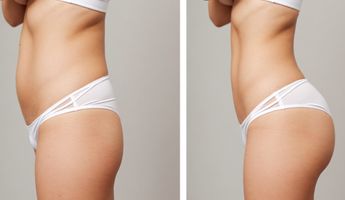
Find the best clinics for Fat Transfer in Poland
With Medijump you can browse 10 facilities offering Fat Transfer procedures in Poland. The cheapest price available is $756 in Szczecin. And for the cheapest price globally, prices start from $167 in Thailand.
Fat Transfer in Szczecin
Price: $ 756
Fat Transfer in Wroclaw
Price: $ 887
Thailand offers the best prices Worldwide
Price: $ 167
From 44 verified reviews
anaart anaart, 09 August 2020
Thank you very much ❤️For new 🎈🎈For Mr. dr. Fabiana Urban.For the surgery performed masterfully, 👌high medical knowledge, extensive experience and very good medical care of the entire staff of the Clinic😊, you and your anesthesiologist who on June 6 assisted in the operation 😊All ladies nurses are golden women, but the one who was with me from the beginning was gold Ms. Viola - professional help from the very beginning, consultation and later surgery.Thanks again for everything zaI highly recommend the Beauty Group clinic.A grateful patientAnia.
Luxmed, can be found in Pulawska, Warsaw, Poland and offers its patients Fat Transfer procedures as well as 70 other procedures, across 13 different procedure categories. The price of a Fat Transfer procedure varies from $1,553 to $5,591, and the average price is around $1,600. Currently, there's no information available about the doctors at the Clinic, and Luxmed is not accredited by any recognised accreditations institutions.
Beauty Poland Katowice, located in Zelazna, Katowice, Poland offers patients Fat Transfer procedures among its total of 29 available procedures, across 3 different specialties. The cost of a Fat Transfer procedure starts from £3,000, whilst the national average price is approximately £1,256. All procedures and treatments are undertaken by the lead specialist at the Hospital, and they are not accredited by any recognized accreditations institutes
Beauty Poland Krakow, located in Kazimierza Czapinskiego, Krakow, Poland offers patients Fat Transfer procedures among its total of 29 available procedures, across 3 different specialties. The cost of a Fat Transfer procedure starts from £3,000, whilst the national average price is approximately £1,256. All procedures and treatments are undertaken by the lead specialist at the Hospital, and they are not accredited by any recognized accreditations institutes
NawMedica, located in Karola Olszewskiego, Wroclaw, Poland offers patients Fat Transfer procedures among its total of 22 available procedures, across 2 different specialties. The cost of a Fat Transfer procedure ranges from £696 to £2,983, whilst the national average price is approximately £1,256. All procedures and treatments are undertaken by just a small team of specialists, with 3 in total at the Hospital, and they are not accredited by any recognized accreditations institutes
Beauty Poland Warsaw, can be found in Pulawska, Warsaw, Poland and offers its patients Fat Transfer procedures as well as 19 other procedures, across 1 different procedure categories. The price of a Fat Transfer procedure starts from just $1,019, and the average price is around $1,600. Currently, there's no information available about the doctors at the Hospital, and Beauty Poland Warsaw is not accredited by any recognised accreditations institutions.
From 6 verified reviews
Ryan Clarke, 22 January 2022
I had gynecomastia surgery at Coramed recently and was extremely impressed by all aspects of my experience with Coramed. I contacted Anna and arranged the surgery and she was great at answering any questions I had. Aspects such as a hotel and a driver for my time in Poland were arranged for me which was a big help and saved time. Total all-in cost including flights, hotel, driver, tests, the surgery etc was about £2k. The actual clinic is incredibly modern and clean, I knew from reading other reviews that the clinic was very high standard but it was even better than I had expected to be honest. Ive experienced some NHS hospitals in the UK and Coramed was much cleaner and more modern. At the clinic, I met Anna as well as some other nurses over the course of my stay and all of them were so nice and professional. I had some doubts over whether I was making a good decision by travelling abroad for surgery in the days before I flew to Poland but after seeing the clinic and meeting the staff I felt at ease and had no nerves. Anna, the other nurses, the anaesthetist and the night nurse were all amazing and spoke good English. The surgery was performed by Dr Berendt who does gynecomastia surgery very often. I am 3 days post-op but already very happy with my results and glad I decided to get the surgery, he has done a good job. The pain was minimal and only really lasted for 1-2 days. I would definitely recommend Coramed, every aspect of the procedure was done to an extremely high standard and at a fraction of what I would have paid in the UK. I cannot imagine that UK surgeries are offering a service that justifies paying 4x more for the same procedure. I'm very happy I did my research and chose the team at Coramed.
Medical Poland Sp. z o.o., located in Kazimierza Czapinskiego, Krakow, Poland offers patients Fat Transfer procedures among its total of 88 available procedures, across 11 different specialties. Currently, there's no pricing information for Fat Transfer procedures at Medical Poland Sp. z o.o., as all prices are available on request only, whilst the national average price is approximately $1,600. There is currently a lack of information available on the specialists practicing at the Hospital, and they are not accredited by any recognized accreditations institutes
Euroklinika, located in Zelazna, Katowice, Poland offers patients Fat Transfer procedures among its total of 23 available procedures, across 6 different specialties. Currently, there's no pricing information for Fat Transfer procedures at Euroklinika, as all prices are available on request only, whilst the national average price is approximately $1,600. All procedures and treatments are undertaken by just a small team of specialists, with 2 in total at the Hospital, and they have multiple recognized accreditations, including: NIL - Polish Chamber of Physicians and DentistsOIL - Okregowa Izba LekarskaPTChPRiE - Polskie Towarzystwo Chirurgii Plastycznej, Rekonstrukcyjnej i EstetycznejCMJ - Program Akredytacji Szpitali
Plastic Surgery & Dentistry Travel, located in Kazimierza Czapinskiego, Krakow, Poland offers patients Fat Transfer procedures among its total of 68 available procedures, across 6 different specialties. Currently, there's no pricing information for Fat Transfer procedures at Plastic Surgery & Dentistry Travel, as all prices are available on request only, whilst the national average price is approximately $1,600. There is currently a lack of information available on the specialists practicing at the Dental, and they have multiple recognized accreditations, including: ISO Certification - International Organization for StandardizationNIL - Polish Chamber of Physicians and DentistsOIL - Okregowa Izba LekarskaPSI - Polskie Stowarzyszenie ImplantologicznePTChPRiE - Polskie Towarzystwo Chirurgii Plastycznej, Rekonstrukcyjnej i EstetycznejPTS - Polskie Towarzystwo Stomatologiczne
- Home
- Poland
Compare Before & After Photos of _procedure_photos.phpFat Transfer


Front view
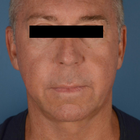
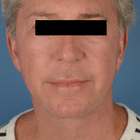
Front view
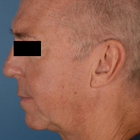
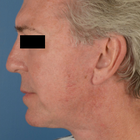
Full-side view
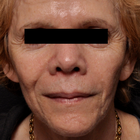
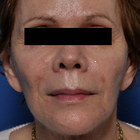
Front view
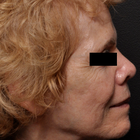
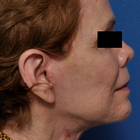
Full-side view
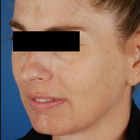

Half-side view
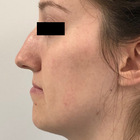
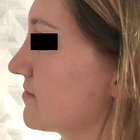
Full-side view
WHY US?
At Medijump, we're making medical easy. You can search, compare, discuss, and book your medical all in one place. We open the door to the best medical providers worldwide, saving you time and energy along the way, and it's all for FREE, no hidden fees, and no price markups guaranteed. So what are you waiting for?

Free

Best Price

Widest Selection

Risk-Free
What you need to know about Fat Transfer in Poland
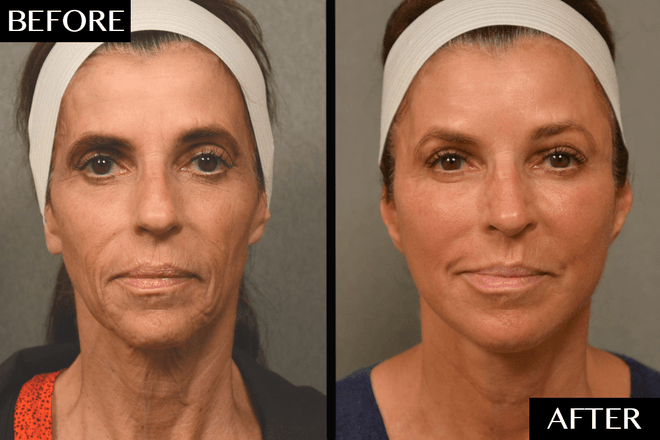
Also known as Fat Harvesting, Fat Grafting, Fat Injections, Lipofilling, Fat Transfer is a cosmetic surgery involving the movement of fat from one part of the body to another. During this procedure, your own fat will be used to fill in irregularities and grooves, primarily in the face, around the temples, eyes, chin, and lips. It can also be used to enhance the appearance of the breast, feet, hips, buttocks, and hands. The procedure is now a well-established technique that was perfected in the early nineties.
Some of the most common aesthetic indications for undergoing fat transfer / lipofilling include sunken cheeks, the disappearance of fat from the cheekbones, deep grooves running from the nose to the corners of the mouth, and in some instances of lines between the lower eyelids and the cheek. It is also one of the most common methods used for lip enhancement. In addition, lipofilling can be used to smooth out all types of irregularities such as those resulting from poorly performed liposuction or injuries.
The necessary fat is obtained by a limited liposculpture through one or several 3 to 5 mm incisions. It is normally taken from the abdomen or inner thigh. The aspirated fat is processed by centrifuging, filtering or rinsing. Pure liquid fatty tissue ready for injection is the result. The fat is then injected where needed. The fat is evenly distributed into the area by injecting minute amounts in the tissues so that the injected fat is well surrounded by healthy tissue. This ensures that the transplanted fat remains in contact with the surrounding tissues that must supply it with oxygen and nutrients.
What is the cost of Fat Transfer in Poland?
Being aware of the costs linked to the Fat Transfer pricing in Poland is vital for efficient budgeting and organizing. Pricing can differ greatly conditional to numerous things, such as the intricacies of the operation, the quantity of fat transferred, the surgeon's skill level, and the clinic's place. Conducting meticulous research and obtaining diverse quotations from multiple providers before settling is advisable.
Bear in mind, the Fat Transfer is generally deemed a vanity procedure, thus, it is not typically insured by health insurance providers. Exceptions may exist if the operation holds a medical necessity, like reconstruction operations post-mastectomy or injury. It's always advantageous to liaise with your insurance provider to grasp the specific details of your coverage and to ascertain the possible out-of-pocket expenses you could face.
What does a Fat Transfer Procedure Involve?
Consisting of two completely different procedures, extraction of fat called liposuction and transfer of fat through injections. Both the donor and recipient sites are sedated by giving local anesthesia. After this, fat is harvested through injections from the sites where adipocytes are tightly packed, such as the buttocks or abdomen. However, the fat present in lateral sides of the thighs and lower abdomen is also good fat as it contains a larger concentration of adipose-derived stem cells. These stem cells promote angiogenesis and adipogenesis at the recipient site - multiple injections are used to do this.
The material extracted is centrifuged, sedimented and filtered for excessive liquid and pure fat cells are injected just below the skin. This is the most difficult step of fat transfer to inject fat evenly in different layers of recipient tissue. Cannulas and syringes of different sizes are used to do this. In the case of breast augmentation, multiple fat injections are applied to the breasts. It is ensured that these fat cells are injected near a blood vessel so the cells don't die due to a lack of nutrition. Proper nutrition is needed for the cells to survive and grow.
What are the types of Fat Transfer?
Facial fat transfer: If you have facial creases, such as laugh lines, smile lines, and crow’s-feet, fat can be removed from your abdomen, thighs, or other areas and be injected into your face. Acne scars and sunken areas of the face, lips, and cheeks can also be filled in. Your plastic surgeon can even use grafted fat to minimize lines between your nose and mouth, correct skin depressions or indentations and minimize forehead wrinkles. (Facelift, Lip Augmentation)
Breast augmentation: Fat transfer breast augmentation essentially uses liposuction to take fat from other parts of your body and inject it into your breasts. This is a breast augmentation option for women who are looking for a relatively small increase in breast size and would prefer natural results.
Breast implants plus fat grafting: If your breast shape needs optimizing during a breast implant procedure, fat grafting can be useful. If you have residual breast irregularities after undergoing breast augmentation with implants, the irregularities can be filled in with fat to produce a smooth contour and an optimal shape.
Breast reconstruction with fat grafting: If you have breast defects following lumpectomy for breast cancer, fat grafting is an effective method for filling in these defects. Fat grafting is also an option for total breast reconstruction following mastectomy; however, to achieve sufficient breast volume, this is usually a multistage process that requires at least two to four sequential fat grafting procedures.
Buttock augmentation with fat grafting: Many people who desire a fuller, more rounded buttock will opt for a “Brazilian butt lift” which uses fat transfer to provide a more curvaceous buttock without the use of an implant. Liposuction is commonly used to both sculpt the surrounding area and collect the autologous fat to be injected.
Hand rejuvenation with fat grafting: Fat grafting into your hands is effective for adding volume, “plumping up” wrinkled areas, covering underlying vessels and tendons and improving the quality of your skin over time.
How Long Should I Stay in Poland for a Fat Transfer Procedure?
As an outpatient procedure, just a couple of hours are needed depending upon the amount of fat that is to be removed and transferred. You can leave the hospital on the same day or sometimes an overnight stay is advised, and in some cases, more than one session is needed. You should stay in Poland for at least 10-14 days after being discharged for regular check-ups. During this period, your health and results of the procedure are monitored by your surgeon.
The precise duration of your visit will primarily hinge on your personal situation, including the scope of your surgery, your total health condition, and your body's healing capability. It is always wise to engage in open dialogue with your surgeon about the anticipated period of your stay.
What's the Recovery Time for Fat Transfer Procedures in Poland?
The recovery period is different for different areas of your body. After a buttock augmentation, you have to sleep on your stomach or keep standing for at least 4 weeks. Because sitting can dissipate the fat. The shape of the augmented area might appear irregular initially, it will get a proper contour after some time. There will be moderate swelling and bruising at both the donor and the recipient sites for 2 weeks. Your face might appear fat and plump after fat grafting but it will settle down before long. You might suffer from moderate pain for a few days. Pain killers are given to deal with this. Almost 6 months are required for the results to fully show.
What sort of Aftercare is Required for Fat Transfer Procedures in Poland?
Things to consider:
- Regular checkups after being discharged.
- Take your medicines regularly, as and when prescribed by the doctor. Avoid self-medication.
- Follow a healthy diet plan for a better recovery.
- Ensure the presence of a friend or family member with you in the early few days to help you with house chores.
- Avoid excessive movement during the early few weeks and do not sit on your butts in case of butt fat transfer because it can dissipate the fat rendering it ineffective.
- Look for the signs of blood clot formation, excessive bruising, etc. Visit your doctor immediately if you find any abnormal thing.
What's the Success Rate of Fat Transfer Procedures in Poland?
When exploring any health-related process, the success ratio becomes a key element to consider. The efficiency of the Fat Transfer in Poland hinges upon various aspects such as proficiency and expertise of the surgeon, the health condition of the individual, and compliance to the guidelines of care after the operation. Fat transfer has been gaining fame due to its dual advantage of eliminating unnecessary fat from the body and accentuating preferred areas.
The outcomes of Fat Transfer show promising persistency. Many people have enjoyed pleasing results that lasted for a long span of time. Fat transfer for breast augmentation has increased by 76% in 2016 while for butt augmentation, a 26% increase has been witnessed. This approach also enjoys a commendable success ratio when it comes to patient satisfaction, with some researches revealing satisfaction percentages reaching up to 85%. It's however crucial to hold realistic anticipations, since factors like age, weight changes, and general health can sway the results. Regular consultations with your health provider are crucial for monitoring improvements and promptly dealing with any arising issues.
Are there Alternatives to Fat Transfer Procedures in Poland?
Fat grafting is an expensive technique as it consists of 2 different procedures. Following are some alternatives to it:
- Dermal fillers: these are given through injections to make your skin look plump. Sunken cheeks can be effectively corrected through this technique.
- Breast implants: for small breasts, implants are an alternative to fat grafting. A silicone implant is inserted into your breasts to increase their size.
- Breast reconstruction: cancer patients, who went through mastectomy can get their bust back by reconstructive surgery.
- Tummy tuck: This procedure tightens your abdominal muscles giving them a tighter and flattened appearance.
- Liposuction: excessive fat is removed from different parts of your body through liposuction. Your tummy looks flatter and you look smarter after this procedure.
- Cheek augmentation: in this technique, silicone implants are inserted into your cheeks to make them look bigger and plump.
All of the techniques mentioned above involve only one procedure.
What Should You Expect Before and After the Procedure
Understanding the process before and after undergoing the Fat Transfer is crucial to easing worries and ensuring a successful outcome. Before the process, your doctor will provide in-depth guidance on the requisite preparations. This might involve abstaining from certain drugs or supplements that may increase bleeding, and possibly, fasting if general anesthesia is planned. Thorough medical check-up and health evaluation will be performed to lower any prospective risks. In particular instances, your doctor may advocate lifestyle alterations such as quitting smoking because it can hinder the recovery process.
Following the Fat Transfer, patients might have minor swelling and bruising, but these usually recede in a few weeks. Aches and discomfort can be effectively controlled with prescribed medicine. Though recovery time varies among individuals, most return to work and resume everyday activities within one to two weeks. Your doctor will provide detailed instructions for a post-procedure care routine, possibly involving wearing pressure garments and regular review meetings to track healing and progress.
What are Potential Risks of Fat Transfer?
Possible complications can include:
- Blood clot formation, infections, and ulmonary embolism leading to the failure of fat grafting
- Absorption of the transferred fat by the body leading to asymmetry or irregularities in the treated area
- The formation of oil cysts or calcification which can interfere with radiological imaging
Whilst the information presented here has been accurately sourced and verified by a medical professional for its accuracy, it is still advised to consult with your doctor before pursuing a medical treatment at one of the listed medical providers
No Time?
Tell us what you're looking for and we'll reachout to the top clinics all at once
Enquire Now

Popular Procedures in Poland
Prices Start From $26

Prices Start From $113

Prices Start From $208

Prices Start From $275

Prices Start From $758

Prices Start From $5

Recommended Medical Centers in Poland for Fat Transfer

- Interpreter services
- Translation service
- Religious facilities
- Medical records transfer
- Medical travel insurance
- Health insurance coordination
- TV in the room
- Safe in the room
- Phone in the room
- Private rooms for patients available

- Interpreter services
- Translation service
- Religious facilities
- Medical records transfer
- Medical travel insurance
- Health insurance coordination
- TV in the room
- Safe in the room
- Phone in the room
- Private rooms for patients available

- Interpreter services
- Translation service
- Religious facilities
- Medical records transfer
- Medical travel insurance
- Health insurance coordination
- TV in the room
- Safe in the room
- Phone in the room
- Private rooms for patients available

- Interpreter services
- Translation service
- Religious facilities
- Medical records transfer
- Medical travel insurance
- Health insurance coordination
- TV in the room
- Safe in the room
- Phone in the room
- Private rooms for patients available

- Interpreter services
- Translation service
- Religious facilities
- Medical records transfer
- Medical travel insurance
- Health insurance coordination
- TV in the room
- Safe in the room
- Phone in the room
- Private rooms for patients available

- Interpreter services
- Translation service
- Religious facilities
- Medical records transfer
- Medical travel insurance
- Health insurance coordination
- TV in the room
- Safe in the room
- Phone in the room
- Private rooms for patients available

- Interpreter services
- Translation service
- Religious facilities
- Medical records transfer
- Medical travel insurance
- Health insurance coordination
- TV in the room
- Safe in the room
- Phone in the room
- Private rooms for patients available

- Interpreter services
- Translation service
- Religious facilities
- Medical records transfer
- Medical travel insurance
- Health insurance coordination
- TV in the room
- Safe in the room
- Phone in the room
- Private rooms for patients available

- Interpreter services
- Translation service
- Religious facilities
- Medical records transfer
- Medical travel insurance
- Health insurance coordination
- TV in the room
- Safe in the room
- Phone in the room
- Private rooms for patients available

- Interpreter services
- Translation service
- Religious facilities
- Medical records transfer
- Medical travel insurance
- Health insurance coordination
- TV in the room
- Safe in the room
- Phone in the room
- Private rooms for patients available
Fat Transfer in and around Poland
About Poland
Poland, as one of Central Europe's most expansive nations, has only recently begun to make its mark as a key player in the realm of Medical Tourism. Being particularly appealing to tourists from neighboring regions, many visitors arrive seeking Fat Transfer procedures. Poland's open border policy further simplifies travel between its territory and other countries within the European Union (EU), making it an accessible destination for many.
The Polish healthcare system comprises a blend of public and private establishments. While none of these facilities hold JCI accreditation, they are endorsed by local accreditations issued by the Polish Ministry of Health. Their recognition within the European Union testifies to the quality and reliability of these certifying bodies.
In Poland, the most frequently sought-after medical procedures encompass dental, cosmetic, orthopedic, and bariatric treatments. Impressively, the costs of these treatments are significantly lower than what one would expect to pay in Poland's Western European counterparts. Beyond Poland's vibrant capital, Warsaw, cities such as Krakow, Jelenia Gora, and Wroclaw have emerged as favored destinations among medical tourists.
Popular Parts of Poland
Poland, with a population exceeding 38.5 million, is a nation steeped in rich history and recognized for its whopping fourteen UNESCO World Heritage Sites. Despite frequently being overshadowed in the realm of tourism, the country in reality, boasts of a multitude of alluring attractions waiting to be explored and appreciated.
- Warsaw, Poland’s capital provides tourists with a mix of old and new. Restored Gothic buildings and modern glass structures stand side by side. The city offers a scenic view. Wander around the streets of Old Town to see the oldest part of the city. Warsaw was also the former home of Frederic François Chopin; tourists can retrace his steps by visiting Saxon Garden, where Chopin’s family used to live next door.
- Krakow is Poland’s former capital. The city is full of charms; from cobbled streets, beautiful squares, pretty buildings, churches, and a castle. Wawel Castle, located in the Old Town area, is an architectural wonder with medieval, baroque, and renaissance style. The city has numerous museums that provide insights into its fascinating history.
- Gdansk stands as one of the country's most breathtaking seaside cities. It houses some of the finest museums in Poland and is renowned for its thriving nightlife and diverse culinary scene. Visitors are encouraged to admire the vibrant street art, delve into history at the numerous museums, explore the charms of the Old Town, and embark on a gastronomic adventure with a food tour in Gdynia. In a nutshell, Gdansk offers a rich and memorable travel experience.
- Poznan will amaze tourists once they see its vibrant, playful, and unique treasures. As the birthplace of the Polish nation, the city offers many historical attractions as well as urban green spaces. Tour the Lech Brewery to learn more about the brewing process of beer visit the Old Market Square and find an array of bars and food stalls.
- Wroclaw is not as popular as other cities in Poland. It’s actually full of attractions, incredible architecture, and hidden gems. Tourists will find dwarf statues throughout the city and can go on the dwarf trail. Market Square is the city’s centerpiece that blends colorful buildings and gives a scenic view, especially in winters.
Weather and Climate in Poland
Poland has a temperate climate and sometimes experiences rough weather. Spring starts in late March to May. The season is characterized by a wave of warmer weather with less frequent rain. It is one of the best times to visit Poland because the temperature is comfortable.
Poland's summer season extends from June until August and brings with it a certain unpredictability in weather patterns. The general climate is warm, with temperatures hovering between 18 to 30°C. Amidst sunny spells and elevated temperatures, frequent rain showers and storms are also common phenomena. This period marks the peak of the tourism season and tourists can expect prices to see a corresponding increase. Despite the occasional rains, summer promises a delightful time to experience Poland in all its warmth.
September to November is Autumn, the season where the temperature starts to drop. Late September and October are still warm, while November is cold and wet. Sunny days during this season are known as “Polish Golden Autumn.”
Winter in Poland, which runs from December until early March, can be exceedingly cold. Temperatures often tumble to an average range of 0 to -10°C and can even drop as low as -20°C. Despite the chilly conditions, this is actually the peak season for mountain ski resorts, attracting numerous enthusiasts to take advantage of Poland's picturesque winter landscapes.
Getting Around in Poland
Most international flights arrive at Warsaw Frederic Chopin Airport. It’s Poland’s largest and busiest airport. The airport serves domestic and has International connections with many cities around the world. It is the hub for LOT Polish Airlines. Budget airlines such as Wizz Air and EasyJet also operate flights from this airport. There is a smaller airport, Warsaw Modlin Airport, which handles more budget airlines.
To get to the city center, bus, taxi, and train are available. There are five public buses that stop at Warsaw’s city center; bus 175, bus 188, bus 148, bus 331, and bus N32 (night bus). Taxis are available, but always make sure to use licensed taxi services. The fare from the airport to the city center is around 40 PLN. Chopin Airport is linked to Legionowo and Sulejówek Miłosna by a railway service. Tourists can buy ZTM tickets to ride the bus and train which can be purchased at the Passenger Information Point in the arrivals hall, ticket machines at bus stops and train station entrance, or from bus drivers.
Ample public transportation options simplify getting around in Poland. Trains, in particular, offer an incredibly budget-friendly means of travel. For instance, the journey from Krakow to Warsaw is set to cost approximately 45 PLN and spans a duration of around three hours. Meanwhile, a slightly longer five-hour train journey from Warsaw to Gdansk can be undertaken at a reasonable fare of around 65 PLN. Such connectivity and affordability make exploration within Poland both easy and economical.
Within the cities, local buses in the central zone cost around 4 PLN (a single-fare ticket). Major cities offer one-day tickets for 20 PLN. Taxis are relatively cheap and tourists can get around the city quickly. Taxis are metered and usually start at around 6 PLN to 8 PLN. Unlicensed taxi drivers are most likely to cheat and charge more. There are taxis that put a fake phone number in their cars, be careful and ask your hotel staff for the number of the taxi company they have used previously. Cycling is a good way to explore the scenery in Poland. There are many bike rentals around the country, always be aware of drivers since some are careless.
For cities like Krakow, tourists are highly recommended to secure tourist cards. These cards provide unlimited access to public transportation for a period of one to three days. In addition, they also offer free or discounted admission to several museums. This is a great bargains that grants tourists flexibility and sizable savings to fully relish their visit.
Tourist Visas in Poland
Poland is part of the Schengen Area. Citizens of the United States, Canada, Australia, New Zealand, Japan, Israel, and several other countries do not need to obtain a visa and can stay in Poland for up to 90 days. EU citizens do not need a visa and can stay indefinitely. Other nationalities must check with their local Polish embassy. All visitors must hold a passport valid for at least six months.
Additional Information about Visa in Poland:
- It is important to note that the visa requirements for Poland can change at any time, so it is always best to check with the Polish embassy or consulate in your home country before you travel.
- If you are planning to stay in Poland for longer than 90 days, you will need to apply for a visa. You can do this at the Polish embassy or consulate in your home country.
- When applying for a visa, you will need to provide a number of documents, including a valid passport, proof of travel insurance, and proof of financial means.
Additional Information
- Local Currency: the official currency is the Polish złoty (PLN). 1 USD converts to 4.21 PLN.
- Money & Payments: ATMs are available in cities and towns; even small villages should have at least one. The best way to exchange rates is at banks or withdrawing money from ATMs. Credit cards (Visa and MasterCard) are accepted in most hotels and restaurants. Always carry small cash and coins for shops and cafes. Tipping in Poland is mostly optional. In restaurants, 10% is the standard. Room-service staff and porters in hotels expect to be tipped. Taxis don’t expect tips.
- Local Language: The official language is Polish. Most of the locals in the tourist areas will have decent English. Foreign tourists should be aware that all official information including street signs and directions are only written in Polish.
- Local Culture and Religion: Christianity is the largest religion in Poland with 87.5% of the population identified as Roman Catholic.
- Public Holidays: Poland celebrates major Christian holidays such as Christmas and Easter. The country hosts many festivals throughout the year such as St. Dominik’s Fair every July to August, Light & Move Festival every October, and Ice Festival every December.
Popular Searches
- Plastic Surgery in Thailand
- Dental Implants in Thailand
- Hair Transplant in Thailand
- Breast Augmentation Thailand
- Gastric Sleeve in Thailand
- Gender Reassignment Surgery in Thailand
- Laser Hair Removal in Bangkok
- Botox in Bangkok
- Dermatology in Bangkok
- Breast Augmentation in Bangkok
- Coolsculpting in Bangkok
- Veneers in Turkey
- Hair Transplant in Turkey
- Rhinoplasty in Turkey
- Stem Cell Therapy in Mexico
- Rhinoplasty in Mexico
- Liposuction in Mexico
- Coolsculpting in Tijuana
- Rhinoplasty in Korea
- Scar Removal in Korea
- Gastric Sleeve in Turkey
- Bone Marrow Transplant in India
- Invisalign in Malaysia
- Plastic Surgery in the Dominican Republic
- Tummy Tuck in the Dominican Republic
- Plastic and Cosmetic Surgery in Poland
- Rhinoplasty in Poland
- Hair Implant in Poland
- Dental Implants in Poland
- IVF in Turkey







